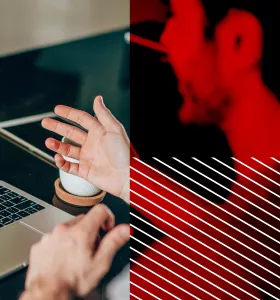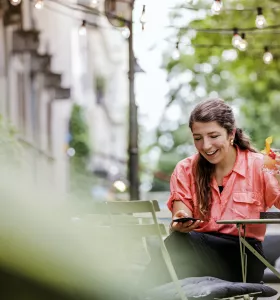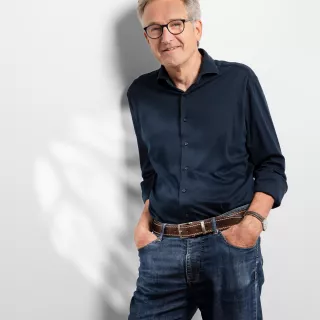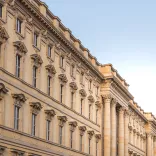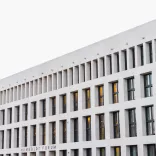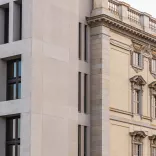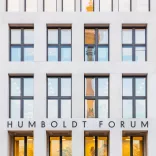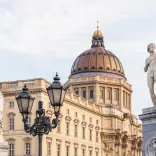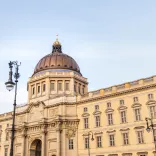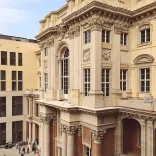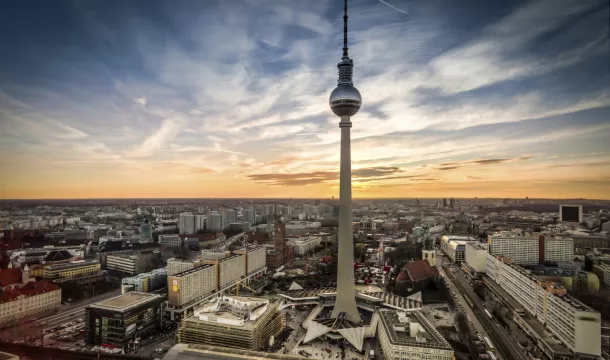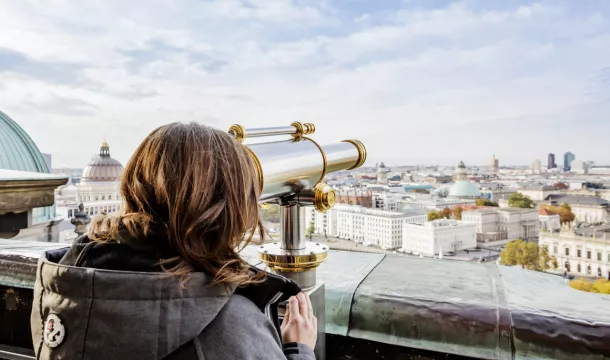The Humboldt Forum
Berlin’s new cultural hub presents a modern centre for the arts, culture, science and education.
- Berlin’s new hub showcases the dialogue with the world’s cultures.
- The Humboldt Forum is one of Germany’s leading cultural centres. On an area of 30,000 m², it offers an interactive platform for dialogue on themes and issues in arts, cultures, sciences and education.
- After the (digital) inauguration of its opening year in December 2020, the Humboldt Forum now welcomes visitors of all ages to explore a comprehensive event programme.
- Apart from addressing current socio-political issues, the interactive programme focuses on three core topics – the history of the site, the Humboldt brothers, and colonialism and coloniality.
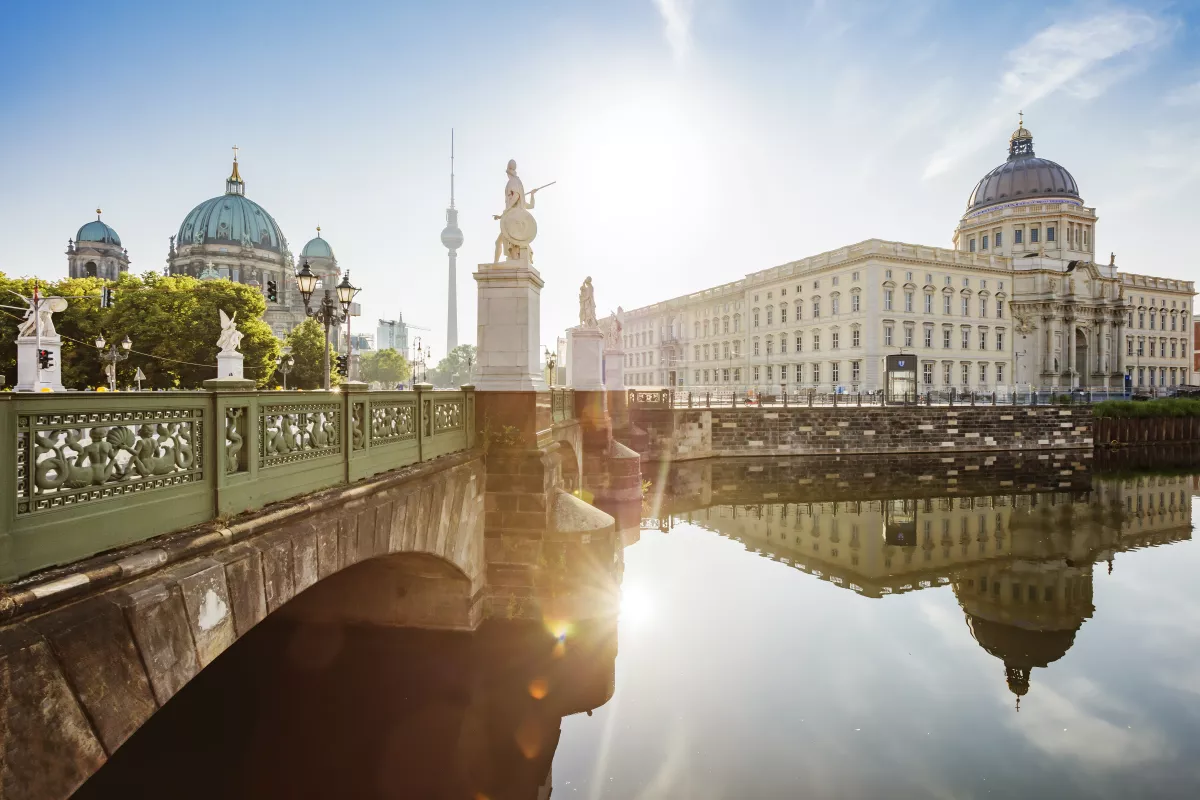
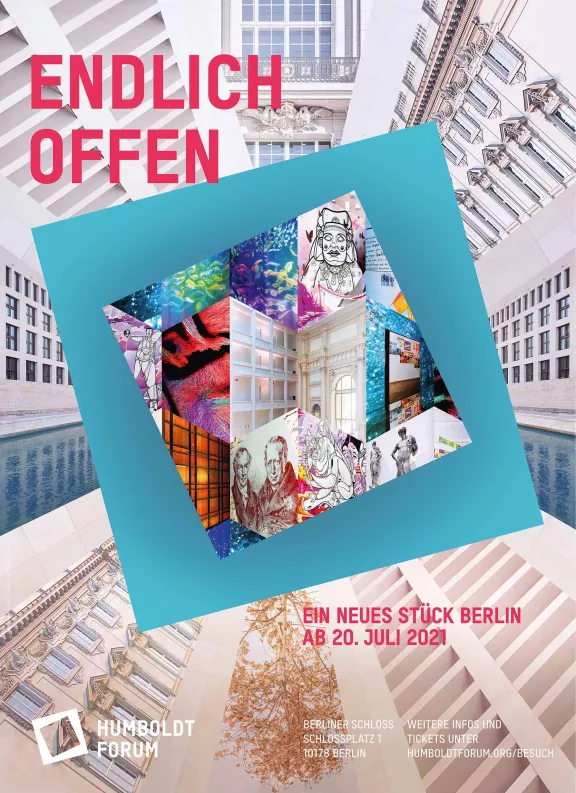
Berlin, March 2021 In December 2020, the Humboldt Forum’s (digital) inauguration of its opening year marked the official launch of this new cultural hub on Berlin’s Schlossplatz. After a construction period of over seven years, the new Humboldt Forum now takes its place as one of Germany’s leading cultural centres. On an exhibition area of approx. 30,000 square metres, it not only explores its three core themes of the History of the Site, the Humboldt Brothers, and Colonialism and Coloniality, but also provides a platform for dialogue for the arts, cultures, sciences and education.

Located in the direct vicinity of the Museum Island and thus in the heart of the city, the Humboldt Forum creates a new city quarter in Berlin. Not only does this close the gap in the city’s cultural heart, but also provides, with its new facilities and services, a place of encounters for people of all ages. A particular focus is placed on the historical site itself. After all, the Berlin Palace that once stood here was the Hohenzollern dynastic residence for nearly 500 years. After the palace was demolished, the GDR used the site for its Palace of the Republic. Moreover, in the sixteenth century, the Berlin Palace housed a Kunstkammer, a Cabinet of Curiosities. With its thousands of objects from around the globe, that collection is considered the ‘nucleus’ of today’s museums. In the Humboldt Forum’s opening year, visitors of all ages can look forward to a diverse and varied programme setting new standards in the international museum landscape.
History
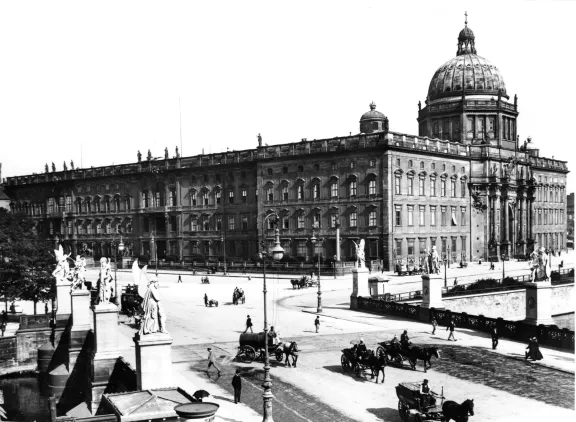
For over 500 years, the Schlossplatz in Berlin’s Mitte district was the site of the Berlin Palace, and for no less than 475 years, this was the city residence of the ruling Hohenzollerns – a dynasty which, down the centuries, produced a number of kings and emperors. The palace, which housed a museum in the post-1918 period, was left badly damaged by the Second World War. In a blasting operation in 1950, the GDR cleared the palace ruins. In the 1970s, this was then the site of East Germany’s Palace of the Republic, which was demolished completely in 2008. A new era started for this site with the foundation stone laid in June 2013 and the (digital) inauguration of the Humboldt Forum’s opening year in December 2020.
Programme

This unique Forum has been created as a homage to Alexander and Wilhelm von Humboldt, two remarkable cosmopolitan thinkers. In its opening year, the Humboldt Forum already offers an extensive programme for young and old and is promoting a dialogue between the world’s cultures. Visitors can, for example, now enjoy a 360° virtual tour of the Humboldt Forum, or watch a short film by writer and activist Priya Basil. Born in Britain and now with German citizenship, she explores the Humboldt Forum from a deeply personal perspective, examining its social and cultural role and the responsibility this implies. Starting in spring, the individual sections are due to open in a series of stages. Programme details can be found on the Humboldt Forum’s website www.humboldtforum.org. The impressive Foyer, approx. 30-meter-high, not only features the reconstructed Eosander Portal, designed by architect Eosander von Göthe, but also a Media Tower with details of the daily programme.
The exhibitions on the history of the site form the first stage of opening the Humboldt Forum. Along winding corridors in the Palace Basement, visitors can take a tour from the Middle Ages to the present day, and also view the Berlin Palace’s foundations. This insight into the site’s history is complemented by the Sculpture Hall and the 28-meter-long video panorama. The Sculpture Hall, where the palace’s main staircase once stood, shows fragments of the historical ensemble as well as magnificent baroque sculptures. The Flashbacks exhibition takes you through the entire building, recalling major events in the past. Children and families are an important part of the Humboldt Forum’s audience, as is evident from the planned Junior Areas in the Staatliche Museen zu Berlin sections as well as the educational offers developed by the Stiftung Humboldt Forum. Moreover, Cultural Education for children and young people belongs to the core of the programme design.
The exhibition Impressions. The Humboldt Brothers gives visitors a chance to find out more about Alexander and Wilhelm, the Humboldt Forum’s namesakes, their principles, and the Forum’s artistic and scientific programme. The interactive opening of the Humboldt Lab on the first floor is planned as another highlight in spring. On around 1000 square metres, visitors can then explore a lively workshop of ideas where outstanding researchers present their projects, show their findings, and engage in dialogue and debate. The BERLIN GLOBAL exhibition on around 4000 square metres of space comprises a series of themed rooms exploring how the city and its people are connected with the world. After all, what happens in the world also influences the city of Berlin – and vice versa.
The Humboldt Forum is not just home to different exhibitions, but also a series of diverse events. Formats such as the participative dance project Moving the Forum, for instance, also invite Berliners to investigate and experience the Humboldt Forum’s spaces for themselves. The modern sound and video installations in the Schlüterhof courtyard and Passage are also intended to highlight the Humboldt Forum’s role as a place of encounters enabling people to meet both day and night.
On the second and third floors of the Humboldt Forum, the exhibition spaces are intended for the collections of the Staatliche Museen zu Berlin’s Ethnological Museum and the Asian Art Museum. Due to open in autumn 2021, the displays will be presenting around 20,000 objects from the holdings. Temporary exhibitions will provide a showcase for other art works from the collections and the communities. Berlin’s Ethnologisches Museum (Ethnological Museum) was founded in 1873. With holdings comprising around 500,000 ethnographic, archaeological and cultural historical objects from Africa, Asia, America, Australia and Oceania, this collection is one of the largest and most important of its kind worldwide. The highlights on show include an eighteenth-century featherwork Madonna from Mexico as well as an Aztec eagle snake stone sculpture from the Central Mexican Highlands (1350 – 1521).

Originally, the Museum for East Asian Art, today’s Museum für Asiatische Kunst (Asian Art Museum) dates back to 1906, and was the first museum of its kind in Germany. The collection includes archaeological artefacts, ritual sculptures from different Asian religions and many other items. Murals and sculptures predominantly from Buddhist cave temples along the Silk Road are one outstanding highlight. Other remarkable areas of the collection include East Asian paintings, art works and artefacts, as well as sacred images from a variety of religions.
All areas of the Humboldt Forum address one particular theme – the constant and critical examination of the diversely discussed core topic of colonialism and coloniality. Based on an intensive engagement with postcolonial perspectives and voices, the Humboldt Forum promotes a process of critical reflection on the legacy of colonialism, the role of Germany and Europe, and its own responsibility.
For example, the temporary exhibitions curated by the Stiftung Humboldt Forum have been developed together with the communities of the countries of origin.
Architecture and new urban spaces

The Humboldt Forum was designed by Italian architect Franco Stella. Through the contrasts created by connecting the three reconstructed baroque palace façades on the Forum’s north, south and west sides with the east-facing modern façade, Franco Stella has produced an interplay of tradition and modernity generating new insights and perspectives, similarly echoed in the courtyards of the complex.
Interpreted in a contemporary style and set in granite walls, the Humboldt Terraces, as a connection to the Lustgarten area, will also provide an extremely attractive leisure feature. The green areas are planted to follow Alexander and Wilhelm von Humboldt’s travels. In future, all the public areas will be accessible for visitors seven days a week around the clock.
The complex also includes two shops and five restaurants, cafés and bistros offering the perfect opportunity to enjoy the Humboldt Forum’s culinary delights. These are also ideal venues to meet with others to soak up the cosmopolitan atmosphere of this remarkable site and take in the various views of Berlin. The Humboldt Forum’s roof terrace, with its panoramic view of the heart of the city, is one of the most attractive locations to end a memorable tour. As of August 2021, the Humboldt Forum will also be home to a Berlin Tourist Info Centre, providing all the inspiration visitors need to discover more of this fascinating city.
The complex also includes two shops and five restaurants, cafés and bistros offering the perfect opportunity to enjoy the Humboldt Forum’s culinary delights. These are also ideal venues to meet with others to soak up the cosmopolitan atmosphere of this remarkable site and take in the various views of Berlin. The Humboldt Forum’s roof terrace, with its panoramic view of the heart of the city, is one of the most attractive locations to end a memorable tour. As of August 2021, the Humboldt Forum will also be home to a Berlin Tourist Info Centre, providing all the inspiration visitors need to discover more of this fascinating city.
Partners
Four partners are working together closely for the new Humboldt Forum: the Berlin State Museums of the Prussian Cultural Heritage Foundation (SPK) present the collections of the Ethnological Museum and the Asian Art Museum. The Kulturprojekte Berlin and the Stadtmuseum Berlin jointly produce the BERLIN GLOBAL exhibition, while the Humboldt University is responsible for the Humboldt Lab. The Humboldt Forum Foundation in the Berlin Palace (Stiftung Humboldt Forum im Berliner Schloss) functions as the Forum’s owner, operator and coordinator.
General information
In general, admission to the Humboldt Forum is free. Visiting individual exhibitions, events and guided tours may be subject to a fee.
Further information for Berlin visitors at visitBerlin.de/humboldt-forum
Find more Berlin inspiration on our Social Media

Instagram @visit_Berlin
Facebook fb.de/visitBerlin | fb.de/Berlin
Twiter @visitBerlin | @BerlinTourism | @visitBerlinNews
visitBerlin.de | about.visitBerlin.de
Impressions of our users on Instagram
#visit_Berlin
#secretspots_Berlin
#foodspots_Berlin
The text can be used in extracts or edited. Please indicate the copyright visitBerlin. Please forward sample copy to: presse@visitBerlin.de or visitBerlin | Pressestelle | Am Karlsbad 11 | D-10785 Berlin.
